Arizona is a state located in the southwestern United States, famous for its natural beauty. Grand Canyon National Park dazzles as one of the world’s most visited canyons, while the mesmerizing narrow passages of Antelope Canyon and the panoramic views of Horseshoe Bend are indispensable for photography enthusiasts. Sedona is famous for its red rock formations and spiritual atmosphere, and also stands out with its art galleries. Monument Valley has been etched in memory as the quintessential backdrop of classic Western films.
In addition, Arizona is home to numerous national parks and monument areas. Petrified Forest fascinates with its millions-of-years-old petrified tree remains, while Saguaro National Park is a symbol of the region with its giant cacti. Kartchner Caverns, famous for its underground caves, attracts both nature and history enthusiasts. Cities like Phoenix and Scottsdale offer modern culture, museums, and luxury resorts, while towns like Tombstone and Jerome provide the opportunity to explore Wild West history. Arizona, as a discovery route full of natural wonders, inspires every traveler.
1. Grand Canyon National Park
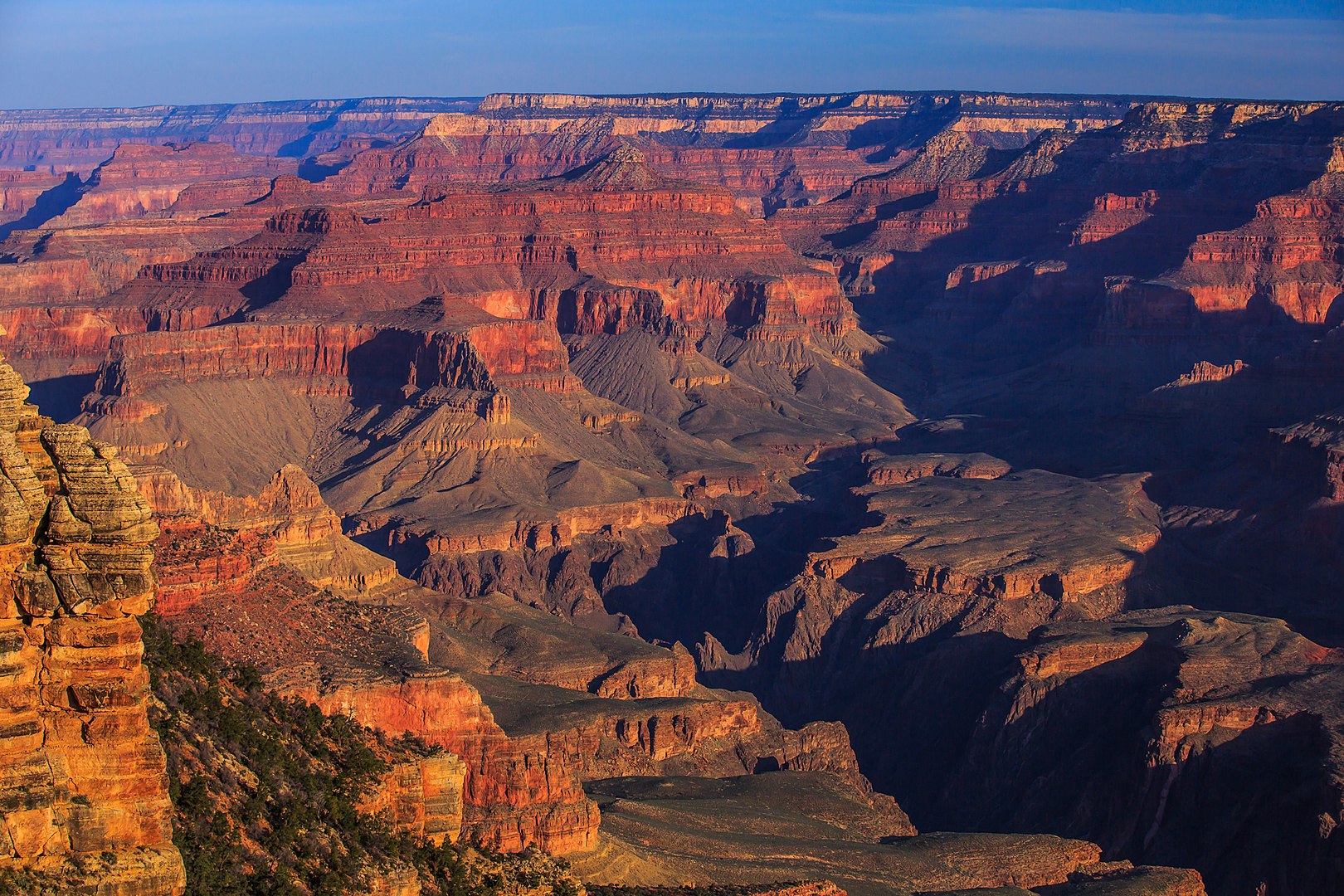
Grand Canyon National Park is a magnificent natural formation located in northern Arizona and is considered one of the seven natural wonders of the world. This canyon, which reaches approximately 446 kilometers in length, 29 kilometers in width, and 1,800 meters in depth, was shaped by the Colorado River through a process of erosion lasting millions of years. The South Rim of the park is the most visited area due to its year-round accessibility, advanced facilities, and breathtaking viewpoints. Spots such as Mather Point, Yavapai Observation Station, and Desert View Watchtower offer visitors extraordinary panoramic views.
The Grand Canyon is popular not only for its scenery but also for its wide variety of activities such as hiking, camping, rafting, and photography. Bright Angel Trail and South Kaibab Trail are the best-known hiking routes for adventurers who want to descend into the canyon. In addition, Grand Canyon Village within the park offers visitors a rich experience with its historical buildings, museums, and accommodation facilities. Listed as a UNESCO World Heritage Site, the Grand Canyon is a unique natural wonder that has won the admiration of tourists from all over the world.
2. Sedona (red rock formations and art galleries)
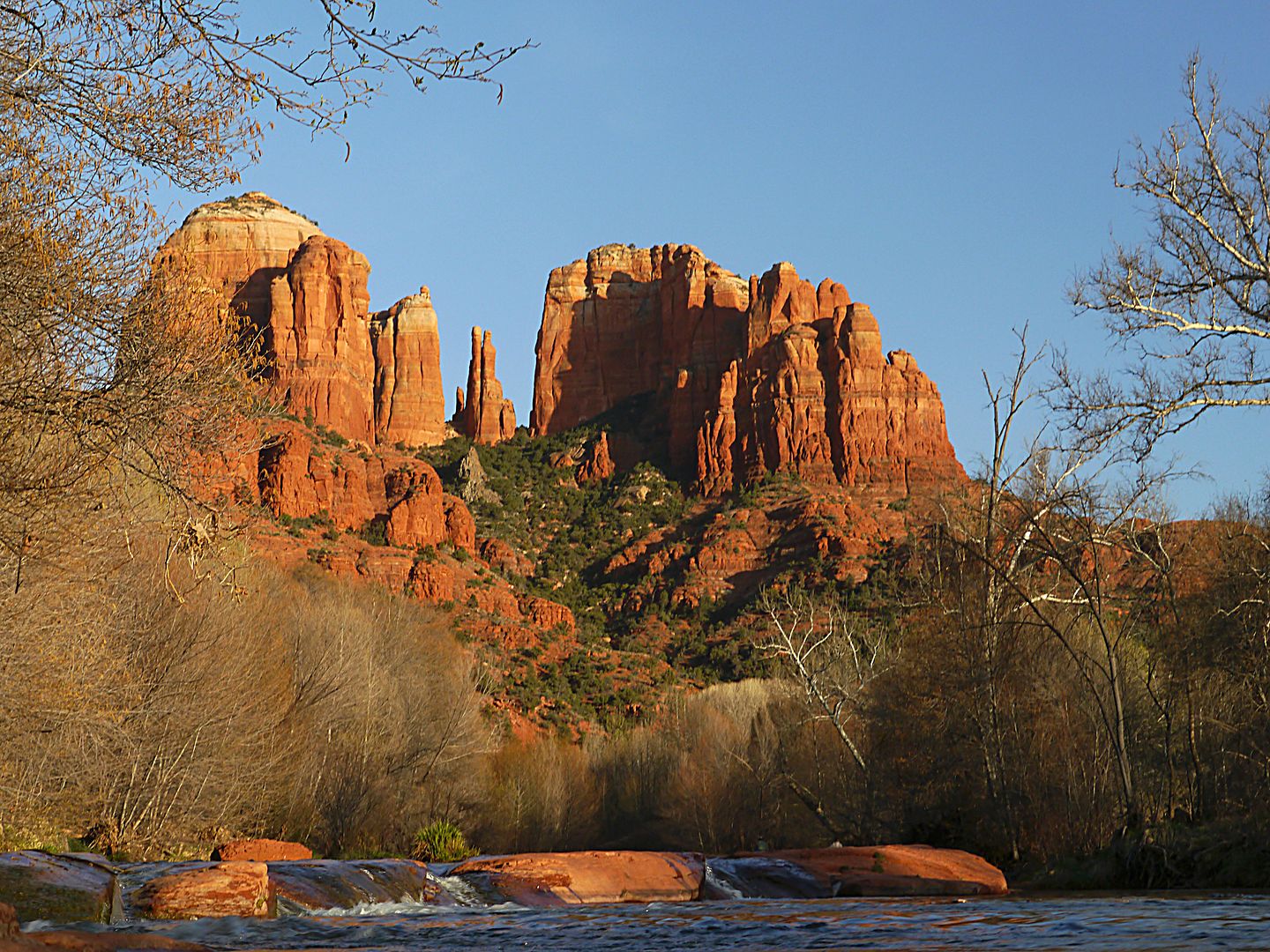
Sedona is a captivating town located in northern Arizona, famous for its impressive red rock formations. The reddish rocks, especially with their dramatic color changes at sunrise and sunset, truly enchant those who see them. Iconic rock formations such as Bell Rock, Cathedral Rock, and Snoopy Rock create popular routes for both hikers and photographers. In addition, Sedona is also known for its surrounding “vortex” sites, which are believed to have powerful energies for meditation and spiritual balance.
Sedona stands out not only for its natural wonders but also for its vibrant atmosphere in the fields of art and culture. The town is home to numerous art galleries, sculpture studios, and handicraft shops. Especially Tlaquepaque Arts & Shopping Village is an important cultural center that offers visitors the opportunity to discover works by local artists. With art festivals and music events held throughout the year, Sedona has become an unforgettable destination for travelers interested in both nature and art.

Monument Valley Navajo Tribal Park is a region located on the border of Arizona and Utah, famous for its iconic sandstone butte formations under the protection of the Navajo Nation. These impressive landscapes, familiar from Western films, resemble a natural theater with their red-colored soil and giant rock towers rising toward the sky. It is possible to see the famous formations — such as Mitten Buttes, Merrick Butte, and Elephant Butte — up close by traveling along the 27-kilometer dirt road called Valley Drive. This area offers one of the world’s most recognized silhouettes for photography enthusiasts.
This place stands out not only for its natural beauty but also for its rich cultural heritage. On tours organized with Navajo guides, it is possible to discover the region’s sacred places, traditions, and history by listening to their stories. In this way, visitors experience the magic of the natural monuments while also gaining valuable knowledge about the Navajo way of life. Monument Valley is a must-see on trips to Arizona, a destination that is unique both culturally and visually.
4. Antelope Canyon
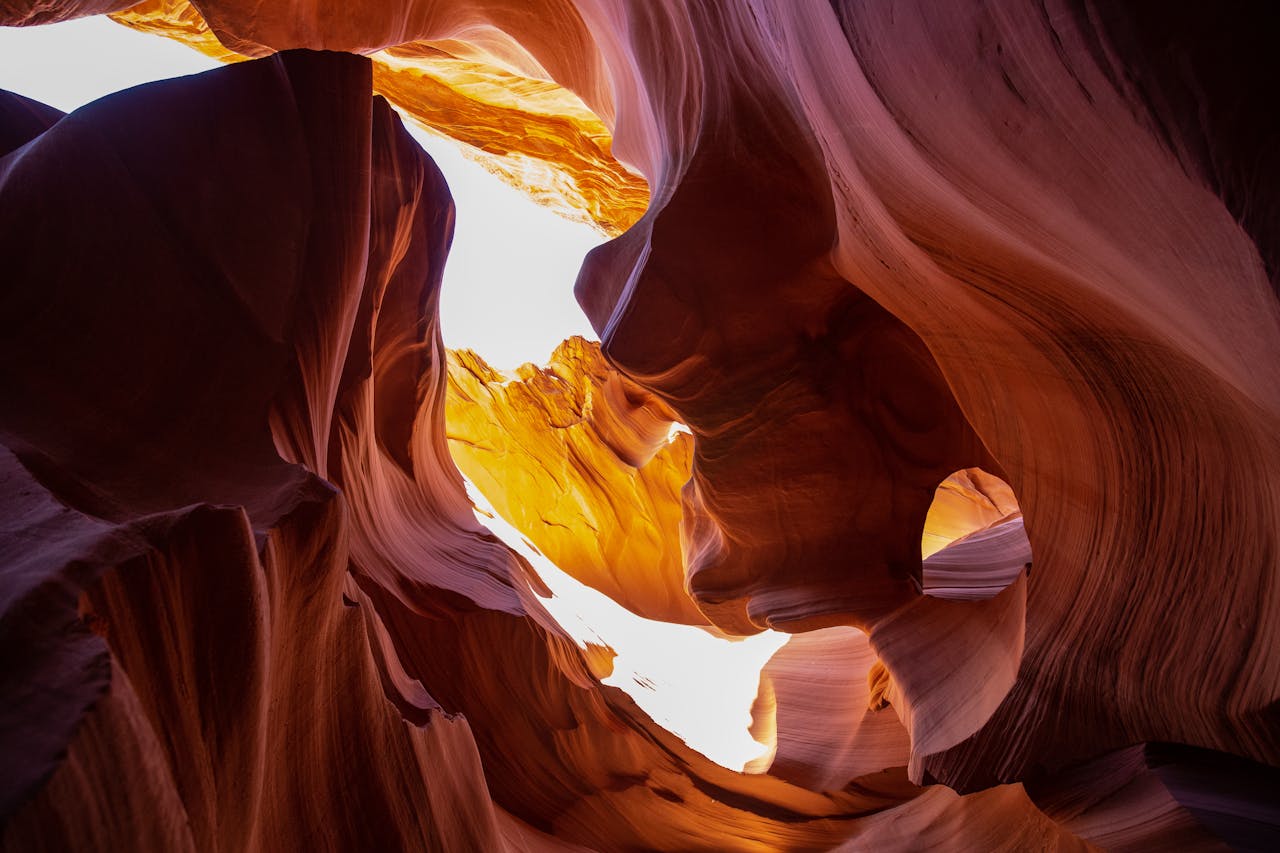
Antelope Canyon is a fascinating natural formation located near the town of Page in northern Arizona and is known as one of the most famous slot canyons in the world. Situated on the lands of the Navajo Nation, this canyon draws attention with its wavy walls and light displays created by flash floods carving the sandstone over thousands of years. It consists of two separate sections, Upper Antelope Canyon and Lower Antelope Canyon; the Upper section is more easily accessible and popular for its dramatic light beams. Especially around midday, the sunlight falling into the canyon creates a truly magical visual spectacle on the orange-red walls.
The narrow passages of Antelope Canyon give visitors an impressive labyrinth-like feeling and make it one of the most photographed natural sites in the world. Tours conducted with professional guides are important both for ensuring safety and for conveying the cultural values of the Navajo people. The unique structure of the canyon is also considered sacred in traditional Navajo beliefs. As one of the top natural wonders, Antelope Canyon is an unforgettable place that everyone visiting Arizona should definitely experience.
5. Horseshoe Bend
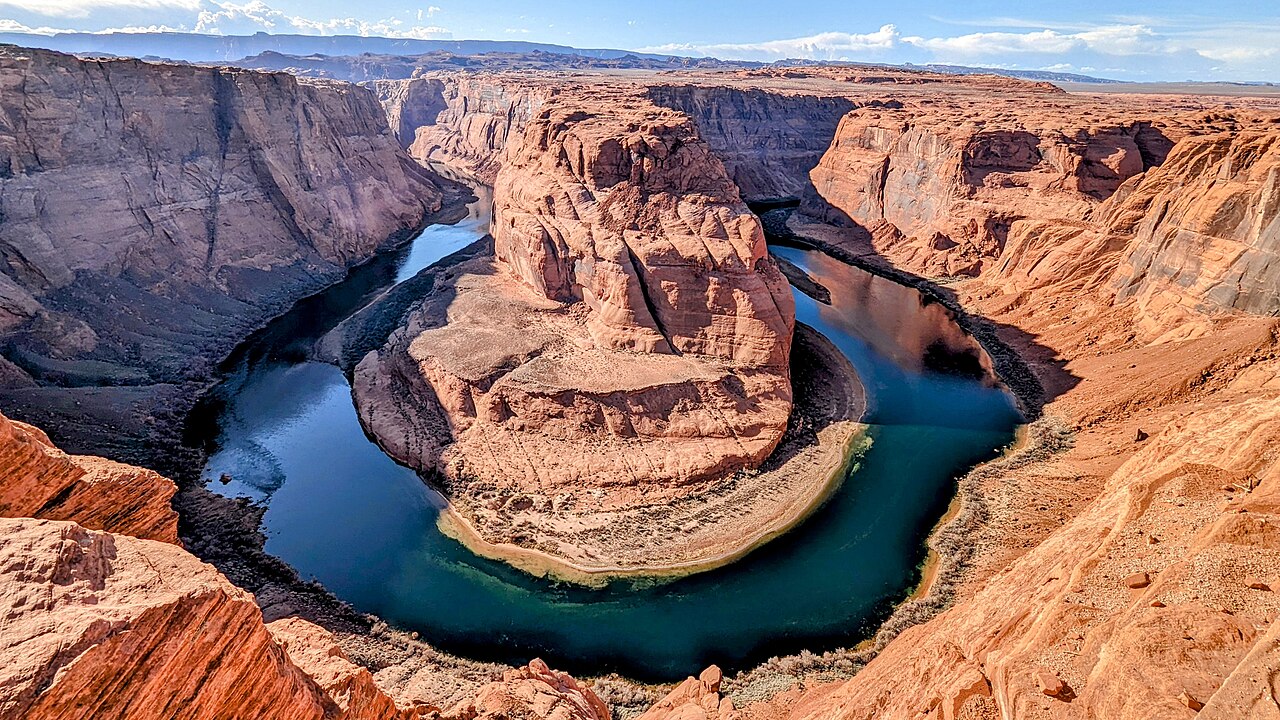
Horseshoe Bend is a natural wonder located near the town of Page in Arizona, featuring an impressive view where the Colorado River creates a magnificent U-shaped curve. This massive bend, observed from approximately 300 meters high, captivates visitors with its unique scenery surrounded by reddish rocks. Especially at sunset, the contrasts created by shadow and light make the view even more dramatic. It can be reached via a roughly 1.2-kilometer walk to a large viewing platform, and this short hike offers visitors an unforgettable experience showcasing the grandeur of the Colorado River.
Although Horseshoe Bend has become famous for its iconic photos frequently shared on social media, it is very important to act carefully to preserve the natural balance of the area. Since safety barriers are limited along the high cliff edges, visitors need to be cautious. Due to increased interest in recent years, some regulations have been put in place to protect the area. Horseshoe Bend is one of the indispensable stops on trips to Arizona and is a natural wonder that leaves a lasting impression on everyone who sees it.
6. Petrified Forest National Park
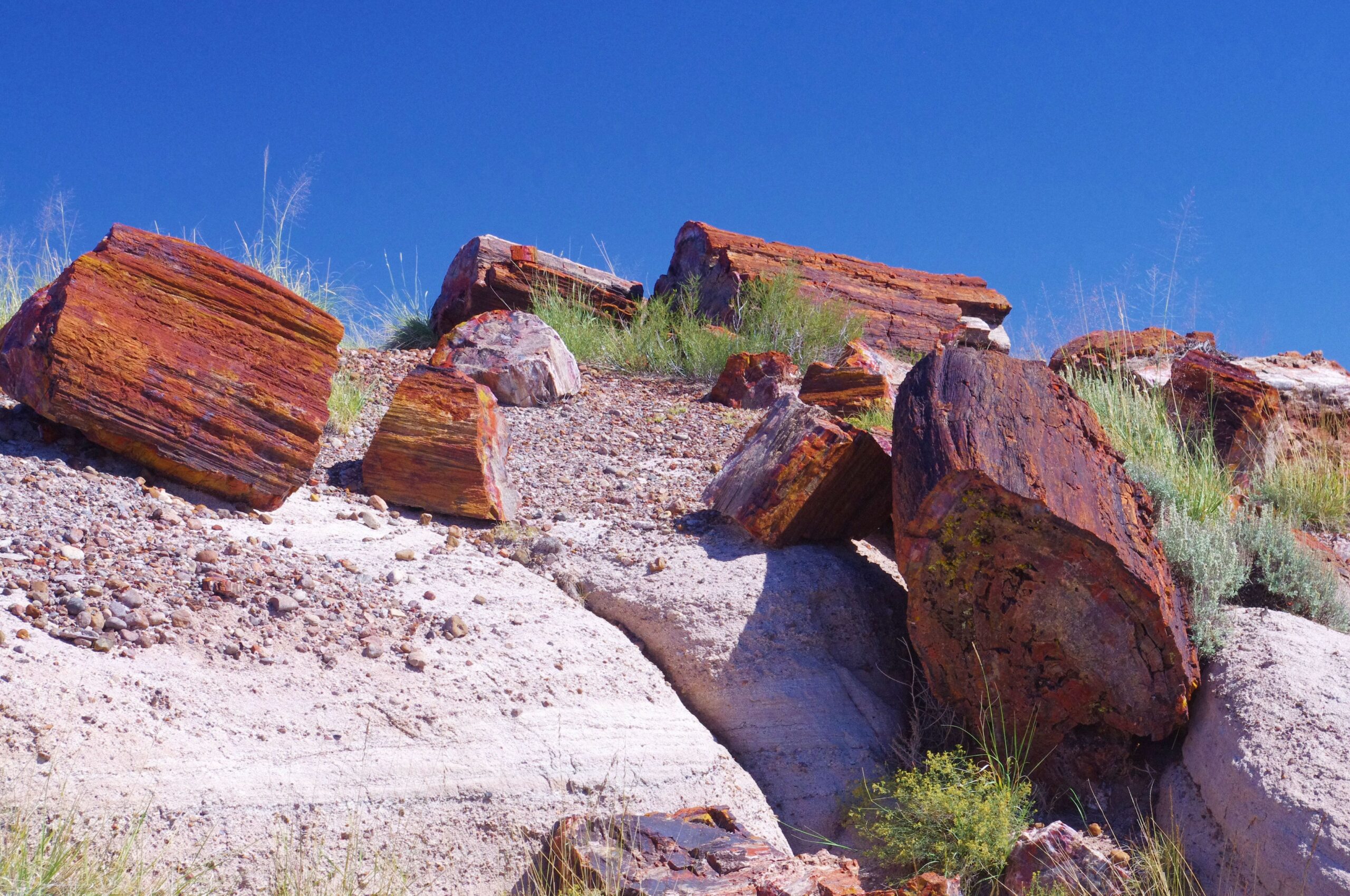
Petrified Forest National Park is a national park located in northeastern Arizona, famous for its fossilized tree remains that are rare in the world. These remnants, formed by coniferous trees that lived 225 million years ago becoming saturated with minerals and turning to stone, are like nature’s fossil art pieces with their colorful crystal textures. The Blue Mesa, Crystal Forest, and Rainbow Forest areas within the park offer fascinating hiking routes for visitors who want to closely examine the petrified tree trunks.
Petrified Forest draws attention not only with its petrified trees but also with its vast Painted Desert area. Here, the wavy hills where red, orange, purple, and gray tones come together create a postcard-like landscape. The park also has a rich archaeological heritage with traces of prehistoric settlements, petroglyphs, and Pueblo remains. This impressive area, where nature and history intertwine, is a must-see on Arizona trips, a place valuable both geologically and culturally.
7. Saguaro National Park
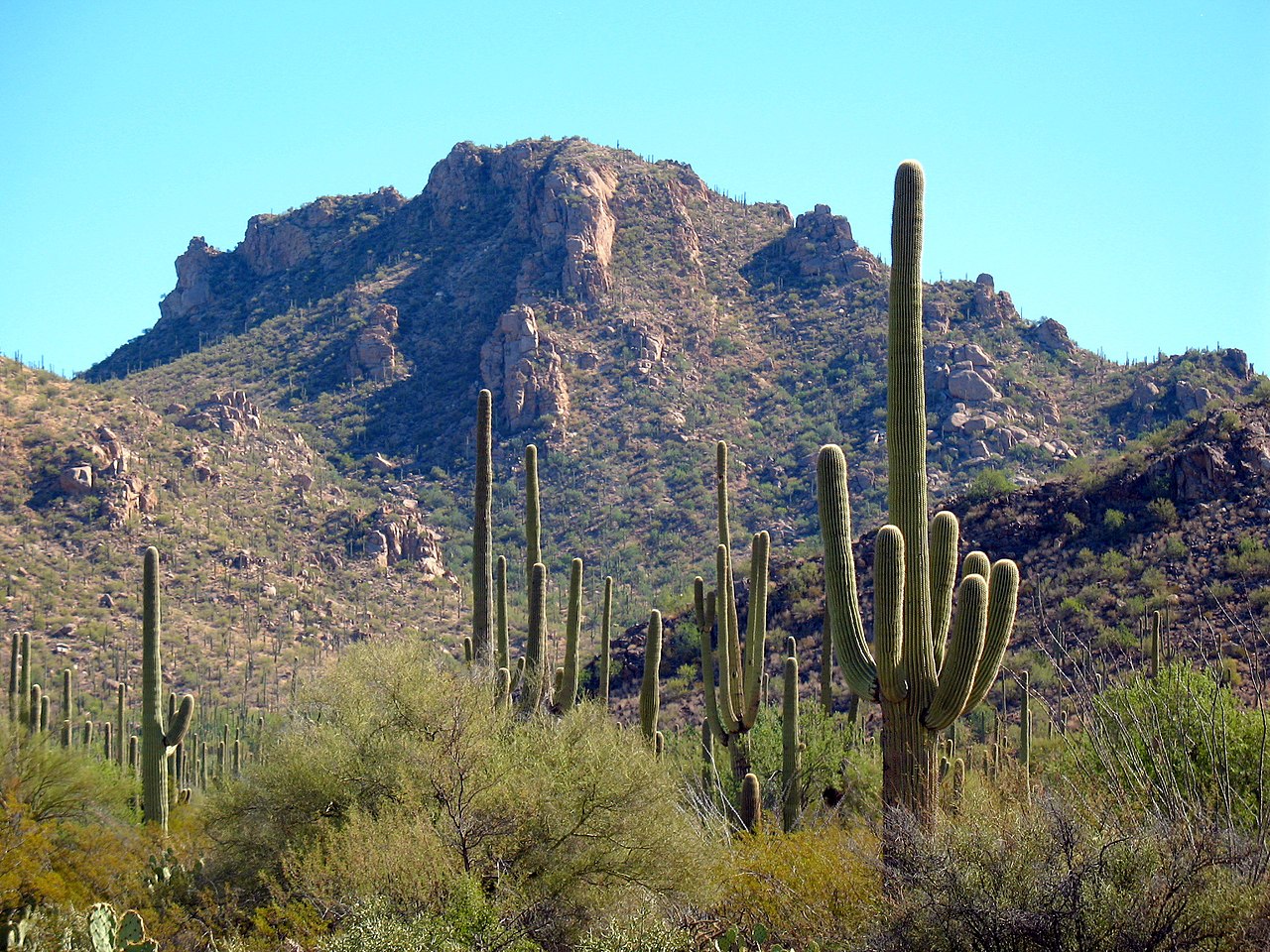
Saguaro National Park is an impressive national park located near the city of Tucson in southern Arizona, named after the giant saguaro cacti that have become the symbol of the region. These giant cacti, some of which can reach up to 15 meters, give the desert landscape an iconic silhouette. The park attracts visitors who want to discover the fascinating life cycle of the saguaro, observe the desert ecosystem, and watch breathtaking sunset views. It is divided into two separate areas, the Rincon Mountain District and the Tucson Mountain District, each offering different experiences for visitors.
The park has numerous hiking trails, picnic areas, and wildlife observation opportunities. Especially in the spring, the blooming cactus flowers give the park a colorful and lively atmosphere. In addition, it is possible to observe animals such as coyotes, desert tortoises, and countless bird species in the park. Saguaro National Park is an unmissable destination for those who want to discover both Arizona’s natural riches and the unique desert ecosystem of the American Southwest.
8. Havasu Falls (Havasupai Indian Reservation)
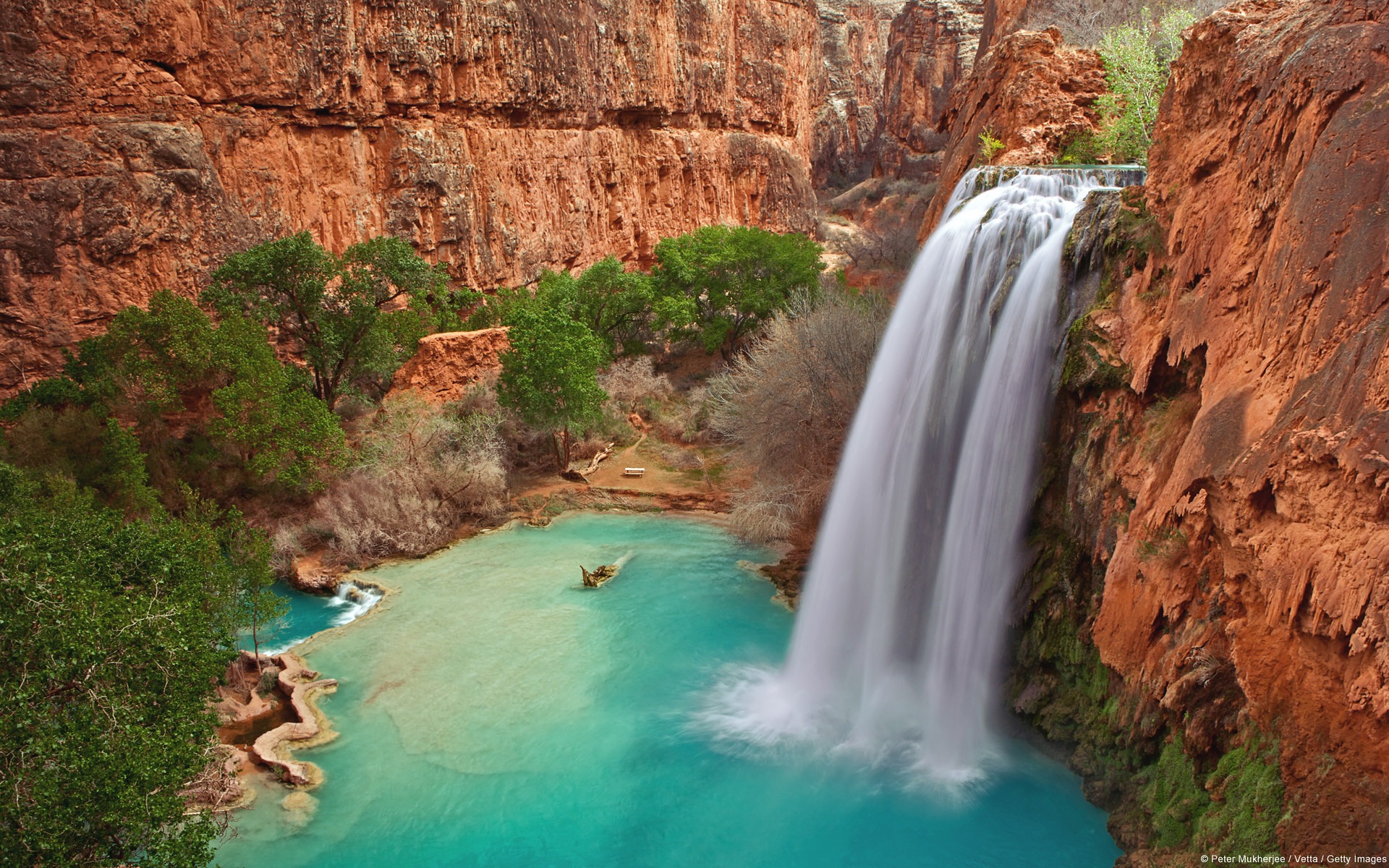
Havasu Falls is a postcard-like waterfall located in northwestern Arizona within the boundaries of the Havasupai Indian Reservation, famous for its turquoise blue water. This waterfall, which drops from a height of about 30 meters, flows into deep blue pools surrounded by reddish canyon walls, creating a unique contrast. To reach the waterfall, it is necessary to make a challenging 16-kilometer hike starting from Hualapai Hilltop; in this way, visitors coming to the area undertake an exploration journey to reach this paradise protected by the Havasupai people.
It is possible to camp around Havasu Falls, and the campsites generally require reservations months in advance, as this unique beauty attracts great interest worldwide. Visitors can enjoy activities such as swimming, photography, and nature hiking here. At the same time, it is very important to show respect for the lands of the Havasupai tribe and to follow local rules. Havasu Falls is one of the most fascinating natural wonders you can see in Arizona, offering an unforgettable experience for those seeking both adventure and tranquility.
9. Lake Powell
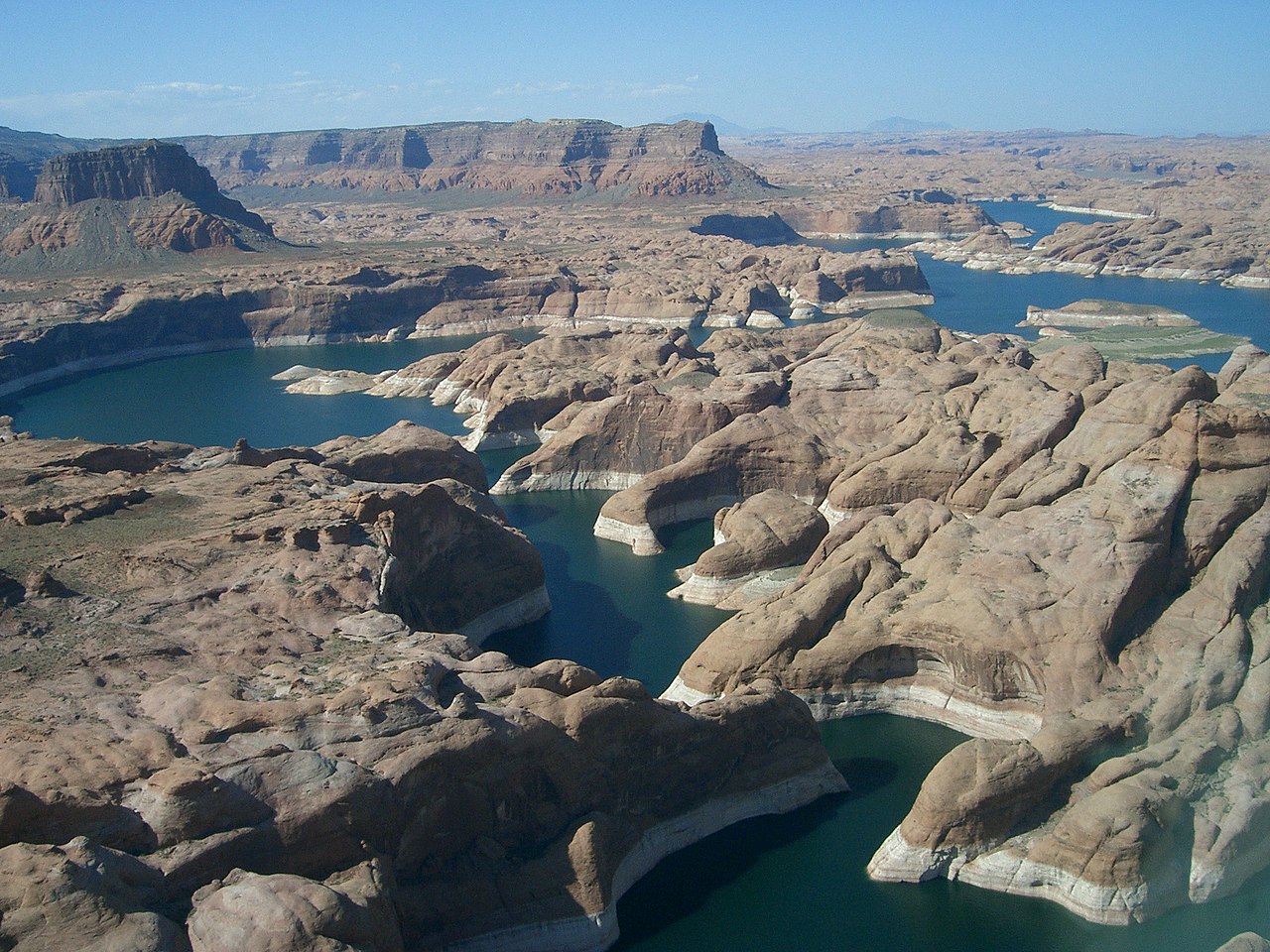
Lake Powell is a massive reservoir located on the border of Arizona and Utah, built on the Colorado River. Formed by the Glen Canyon Dam, this artificial lake stands out as one of the largest lakes in America with more than 3,000 kilometers of shoreline. Its clear blue waters, combined with stunning canyon views surrounded by red rocks, offer an extraordinary visual feast. For this reason, it is an extremely popular destination for activities such as boat tours, water sports, and camping.
Lake Powell also hosts numerous hidden coves, natural bridges, and canyons worth exploring; the most famous among them is Rainbow Bridge National Monument. The surroundings of the lake and its islands are a unique attraction for photographers and nature enthusiasts. In addition, thanks to the possibility of renting a houseboat, it is also possible to spend several days on the lake and fully enjoy this unique natural environment. Lake Powell is one of the unforgettable routes of an Arizona trip, offering both adventure and tranquility together.
10. Meteor Crater
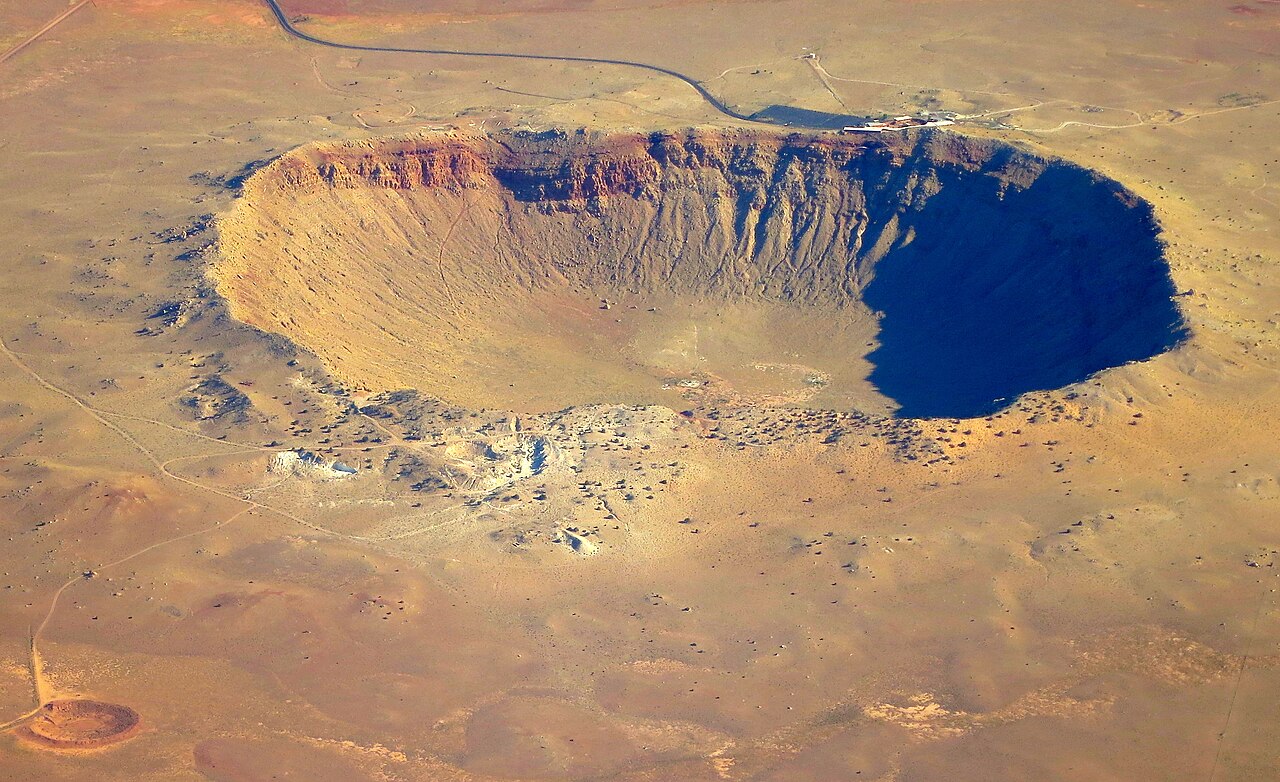
Meteor Crater is a massive impact crater located near the city of Flagstaff in Arizona, formed about 50,000 years ago by a meteorite impact. With a diameter of approximately 1,200 meters and a depth of 170 meters, this crater is considered one of the best-preserved meteor impact sites in the world. This impressive formation is highly interesting for scientists and curious travelers who want to observe the effects of meteorites on Earth. Watching the view from observation points on the edge of the crater gives visitors the feeling of being on another planet.
The interactive exhibits at the Meteor Crater Visitor Center provide rich information about meteorites and impact craters, reinforcing the scientific significance of this natural wonder. In addition, guided walks around the crater offer the opportunity to learn detailed information about the geology and history of the area. Meteor Crater, which offers both an educational and fascinating experience, is one of the most interesting places to visit in Arizona.
11. Painted Desert
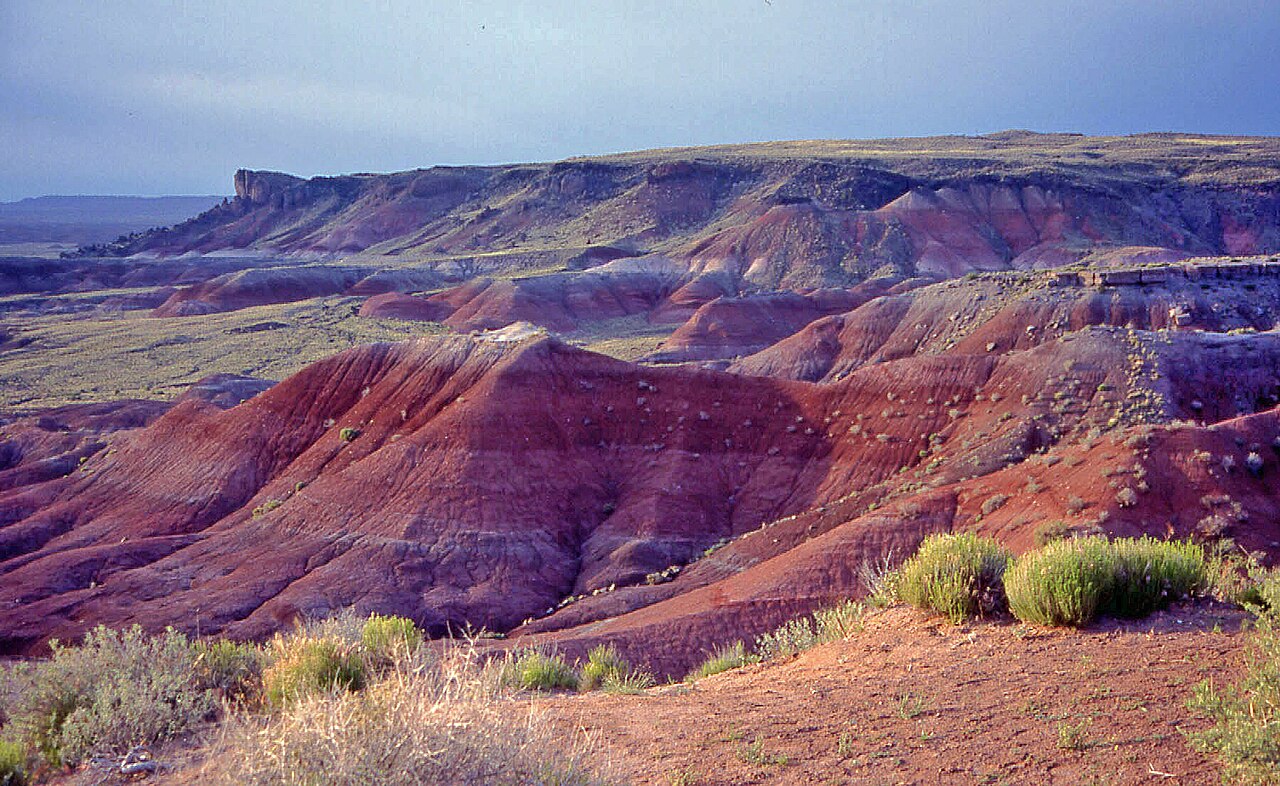
Painted Desert is a fascinating desert region located in northeastern Arizona, famous for its colorful layered soils that appear “painted.” This impressive landscape emerged from the combination of red, pink, purple, gray, and orange tones on the wavy hills shaped over the years by wind and water erosion. Especially during sunrise and sunset, the sunlight makes these colors even more vivid, offering visitors unforgettable views. Painted Desert is located in the northern part of Petrified Forest National Park and is generally visited together with this park.
The region stands out not only with its impressive geological structure but also with its historical and cultural richness. Here, one can find petroglyphs, ancient settlement remains, and traces of native communities who lived in the past. In addition, various viewpoints along the park roads allow visitors to comfortably enjoy this extraordinary desert panorama. Painted Desert, one of Arizona’s most fascinating natural areas, is a must-see destination for nature and photography enthusiasts.
12. Organ Pipe Cactus National Monument
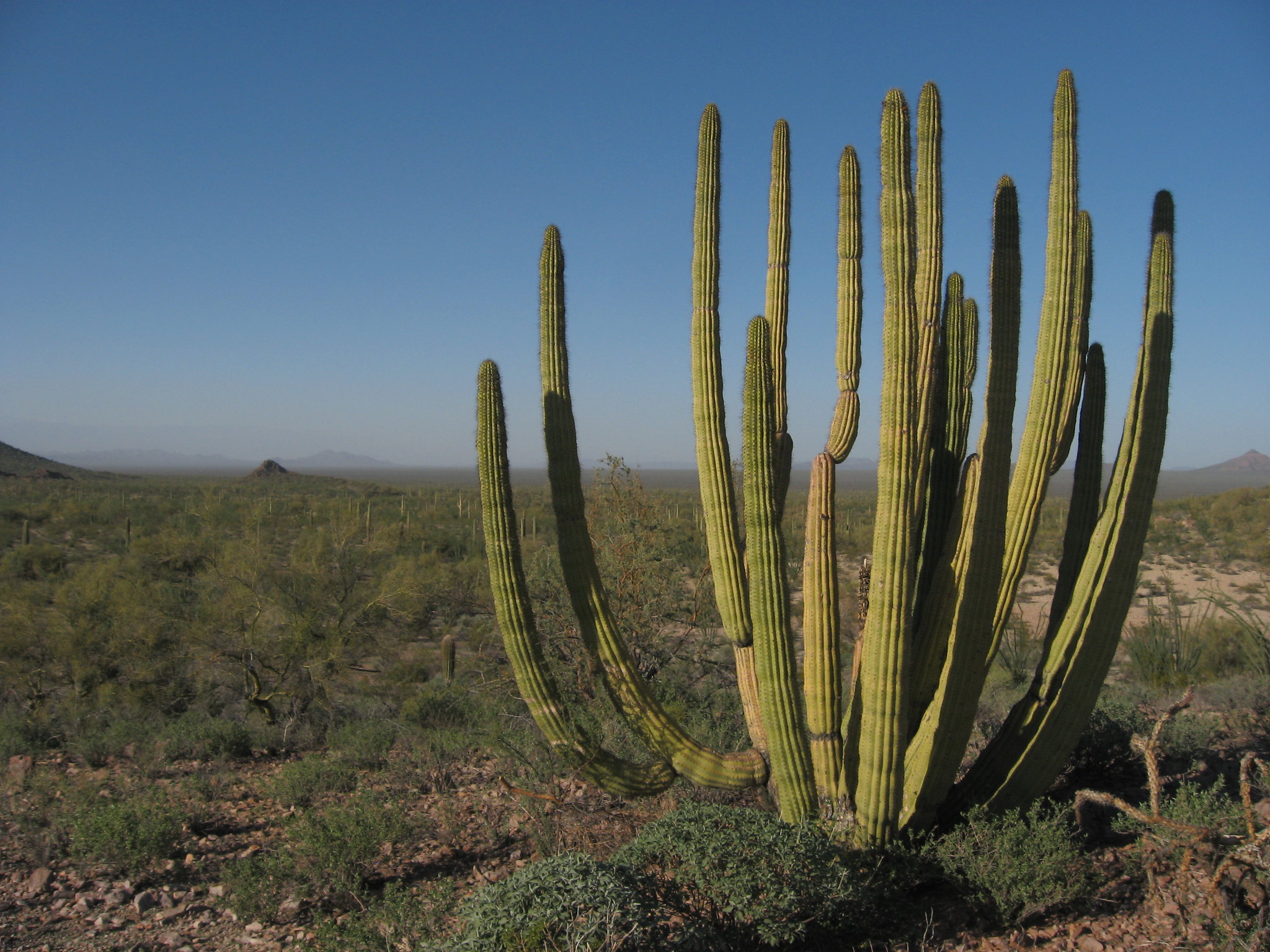
Organ Pipe Cactus National Monument is an impressive protected area located in southwestern Arizona, near the Mexican border, and takes its name from its giant multi-armed cacti resembling organ pipes. These monumental cacti grow naturally only in this region within the United States and form the most characteristic vegetation of the Sonoran Desert. The Scenic Drive and various hiking trails in the park offer visitors the opportunity to discover this unique plant diversity. Especially in the spring, the blooming cactus flowers add vibrant color to the desert, making the scenery fascinating.
The park stands out not only with its cacti but also with its rich wildlife. Coyotes, mountain lions, desert tortoises, and many bird species can be observed here. Declared a biosphere reserve by UNESCO, Organ Pipe Cactus National Monument is of great importance for both scientific research and nature conservation. For those who want to explore one of Arizona’s most beautiful desert ecosystems, this park offers an unforgettable nature experience.
13. Tombstone (historic town with a Wild West theme)
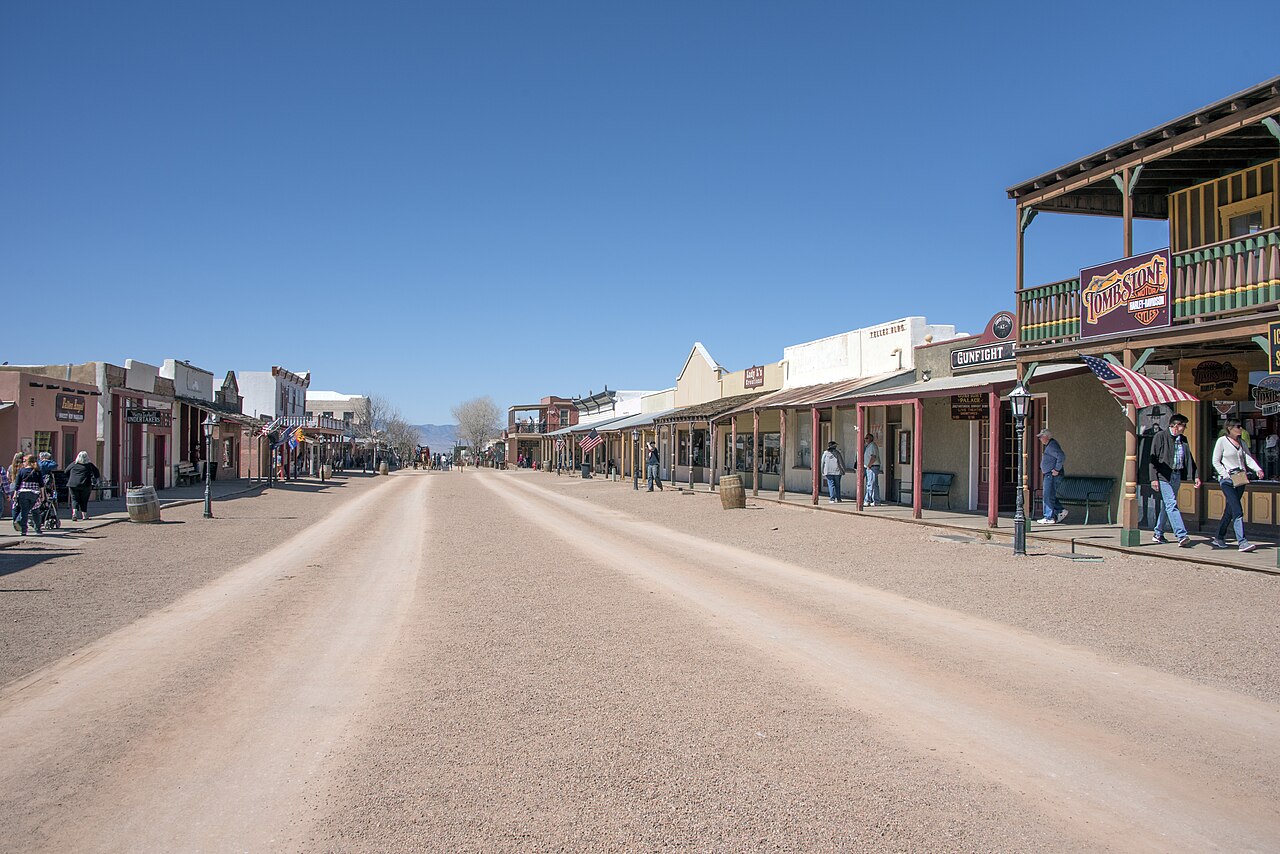
Tombstone is an authentic town located in southeastern Arizona, which went down in history as one of the most famous mining towns of the 19th-century Wild West era. Experiencing a great boom with its silver mines in the 1880s, this town became a center of American Western legends with figures such as the famous OK Corral shootout and Wyatt Earp. Today in Tombstone, historic buildings, dusty streets, and Western-style saloons give visitors the feeling of living in that era. Through reenactments, gunfight shows, and museums, the town’s past is kept alive.
Visitors can discover impressive details about the town’s history at historical sites such as Tombstone Courthouse State Historic Park and Boothill Graveyard. In addition, festivals along Allen Street, stagecoach tours, and events held with period costumes add a special color to the town. Tombstone is a fun and history-filled destination for anyone who wants to get to know Western American culture up close.
14. Canyon de Chelly National Monument
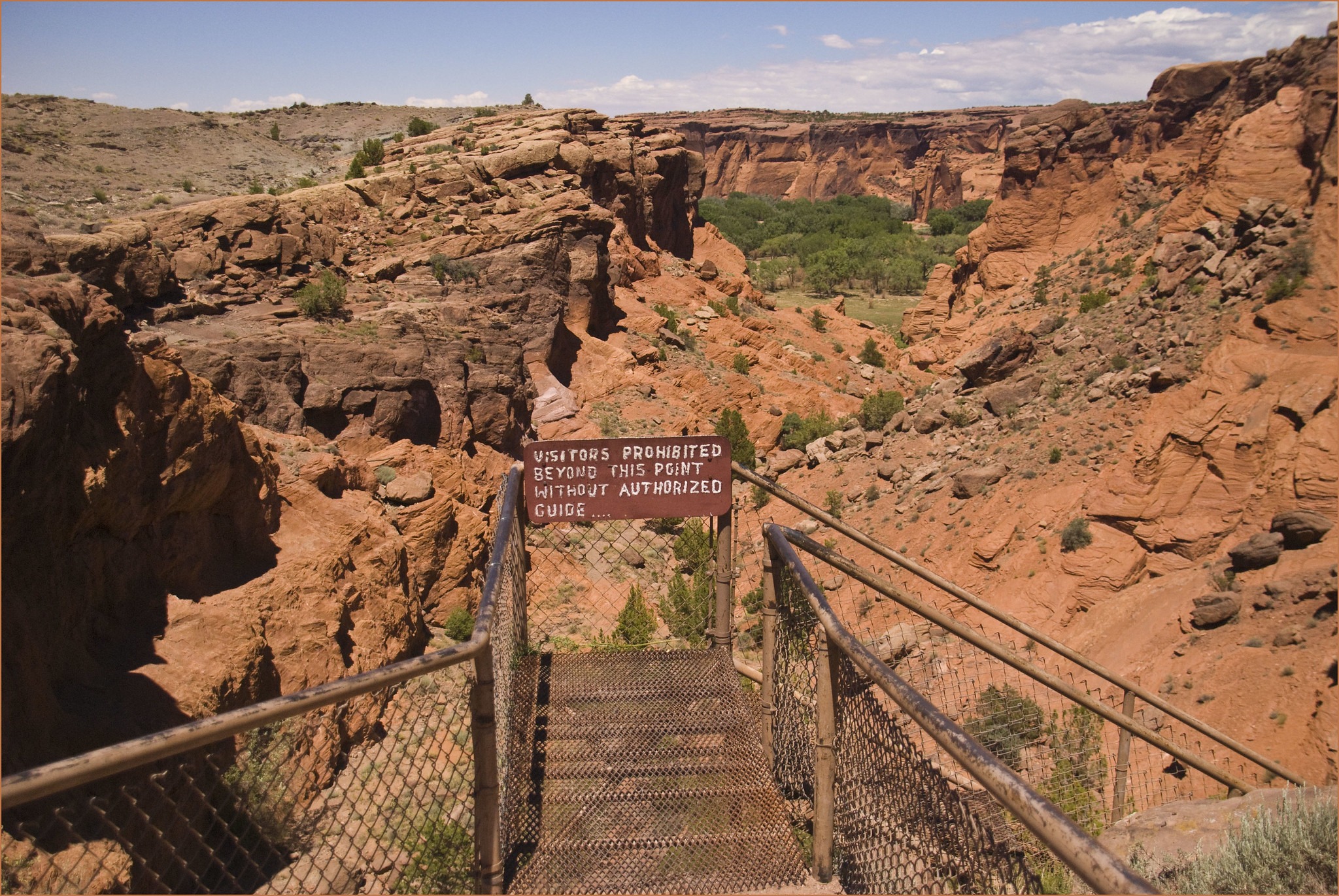
Canyon de Chelly National Monument is an impressive canyon located in northeastern Arizona on the lands of the Navajo Nation, filled with traces of human settlement dating back thousands of years. The canyon’s steep red sandstone walls, along with the ancient remains left by the Navajo people and the earlier Anasazi (Ancestral Puebloan) civilization, offer a rich cultural and historical heritage. Ancient settlement sites such as White House Ruin and Mummy Cave stand out as impressive structures built into the rocks. These areas can be viewed from viewpoints along Canyon Rim Drive.
Canyon de Chelly captivates visitors not only with its archaeological wealth but also with its fascinating natural scenery. Tours organized with Navajo guides allow visitors to go inside the canyon and gain in-depth knowledge about both its history and culture. During these tours, you can also closely learn about the traditions, way of life, and ties of the Navajo people to the canyon. Canyon de Chelly, one of the most impressive places in Arizona, is a destination that is unique both naturally and culturally.
15. Jerome (historic mining town)
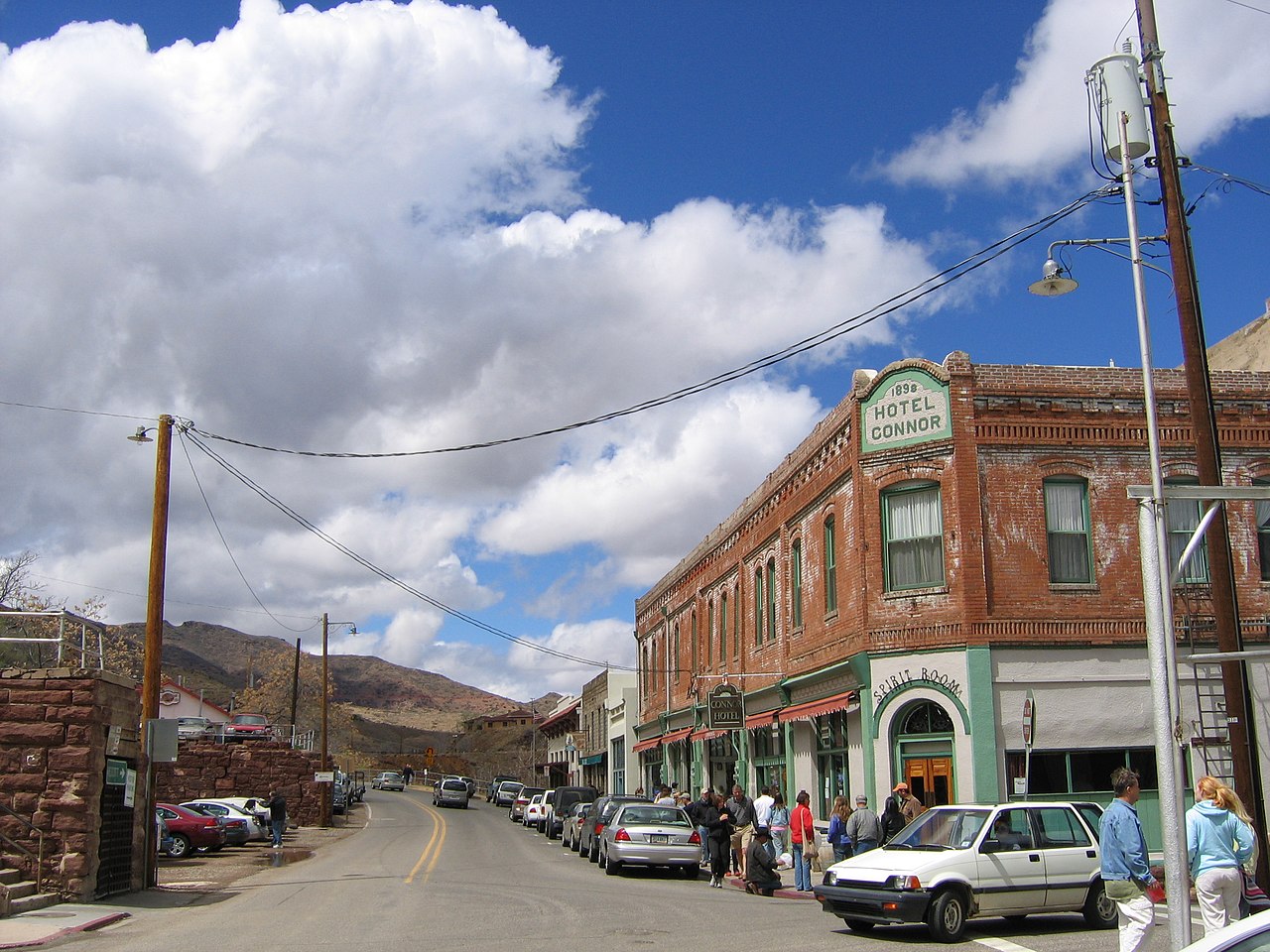
Jerome is a former mining town established at the foothills of the Mingus Mountains in northern Arizona. This town gained great wealth through copper mining in the late 19th century and was once known as “the wickedest town in the West.” After the mines closed, Jerome was nearly abandoned, but today it has been revitalized with art galleries, boutique shops, historic buildings, and interesting museums. The hillside houses and narrow streets help the town preserve its unique character.
Jerome State Historic Park attracts visitors with exhibits telling the story of the town’s mining past, while ghost town-themed tours contribute to its mysterious atmosphere. In addition, thanks to the town’s high location, magnificent views of Sedona and the Verde Valley can be seen. Today, Jerome is an appealing route for those who want to spend time surrounded by both history and art and is one of Arizona’s most characteristic and interesting towns.
16. Kartchner Caverns State Park
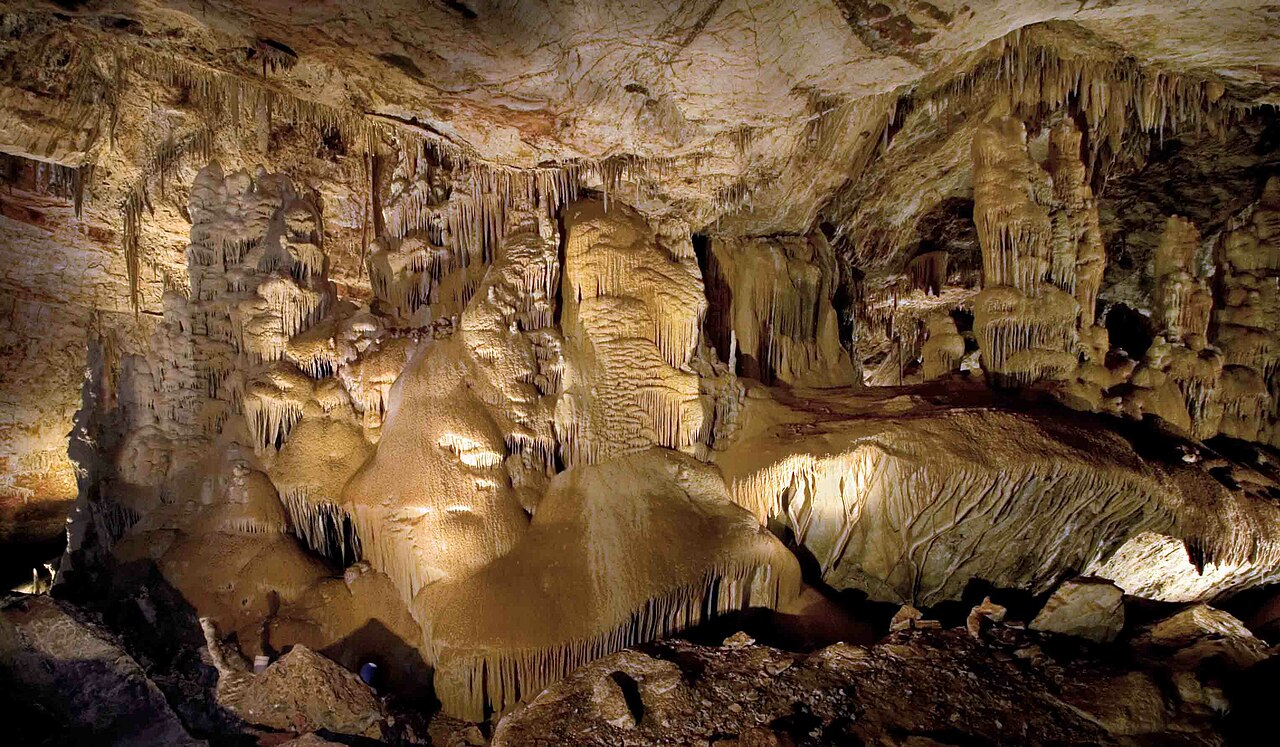
Kartchner Caverns State Park is a natural wonder located in southern Arizona near the city of Benson, famous for its remarkably well-preserved massive limestone caves. Discovered in 1974, these caves draw attention with their impressive stalactites, stalagmites, and columns formed through geological processes over millions of years. Thanks to the humid and warm environment inside the cave, these formations continue to grow. Through guided tours, visitors can safely explore the magnificent underground beauties in sections such as the Rotunda/Throne Room and the Big Room.
Kartchner Caverns is of great importance not only visually but also scientifically. The bat colonies living here are an important part of the cave’s ecosystem and are protected. In addition, the park area outside the cave offers hiking trails, picnic areas, and nature observation opportunities. For anyone curious about Arizona’s underground world, Kartchner Caverns State Park offers both an educational and fascinating experience.
17. Flagstaff (nature and astronomy center)
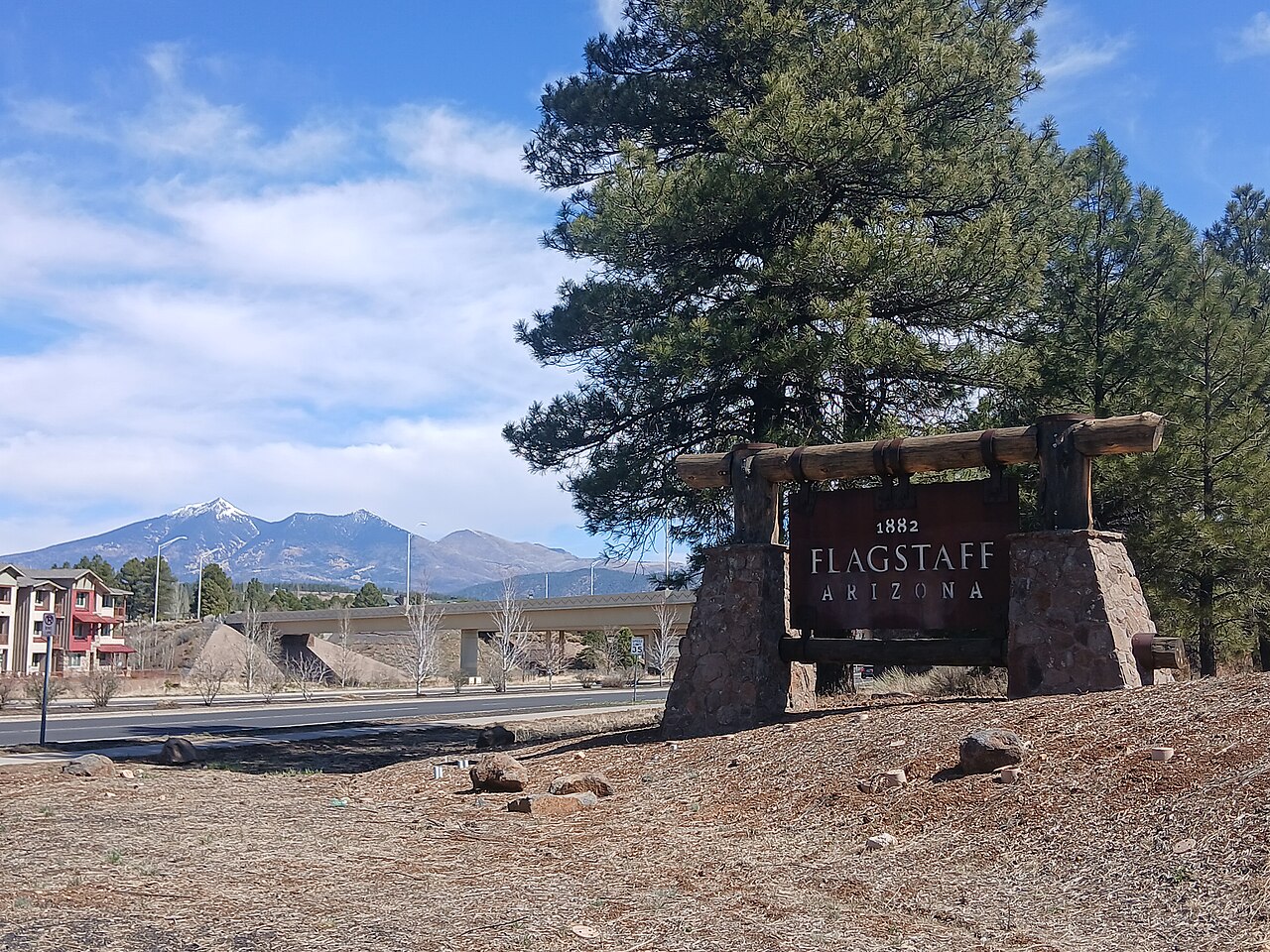
Flagstaff is a lively city located in northern Arizona at the foothills of the San Francisco Peaks, standing out with its outdoor activities throughout all four seasons. Thanks to its high elevation, Flagstaff is cool in the summer and snow-covered in the winter, attracting nature lovers with its ski resorts, hiking trails, and biking routes. Its location along Route 66 also makes it a historic attraction. National monuments around the city, such as Walnut Canyon, Sunset Crater Volcano, and Wupatki National Monument, offer great stops for those who want to explore both history and nature together.
Flagstaff is also an important center for astronomy. Lowell Observatory is known as the place where Pluto was discovered and still brings visitors closer to science with active observations. In 2001, the city earned the title of “International Dark Sky City,” pioneering efforts to reduce light pollution. This makes it an excellent place to watch the night sky and see stars and planets with the naked eye. Flagstaff is an unmissable destination for travelers interested in both nature and the world of science.
18. Scottsdale (resorts and art scene)

Scottsdale is a stylish and modern city located in the Phoenix metropolitan area of Arizona, standing out for its luxury resorts and spa centers. Thanks to its sunny weather year-round, golf courses, and resort hotels, it is an attractive destination for visitors who want to relax and have an enjoyable time. Especially the Old Town Scottsdale area, with its western-themed architecture, restaurants, and lively nightlife, draws the interest of both tourists and locals.
Scottsdale also has a strong art and culture scene. Enriched by numerous art galleries, museums, and public art projects, the city strengthens its artistic appeal with events such as the annual Scottsdale Arts Festival. Institutions like the Scottsdale Museum of Contemporary Art and Western Spirit: Scottsdale’s Museum of the West make significant contributions to the city’s cultural fabric. With both modern comfort and an artistic spirit, Scottsdale is one of the most dynamic and sophisticated stops in Arizona.
19. Phoenix (capital and cultural activities)
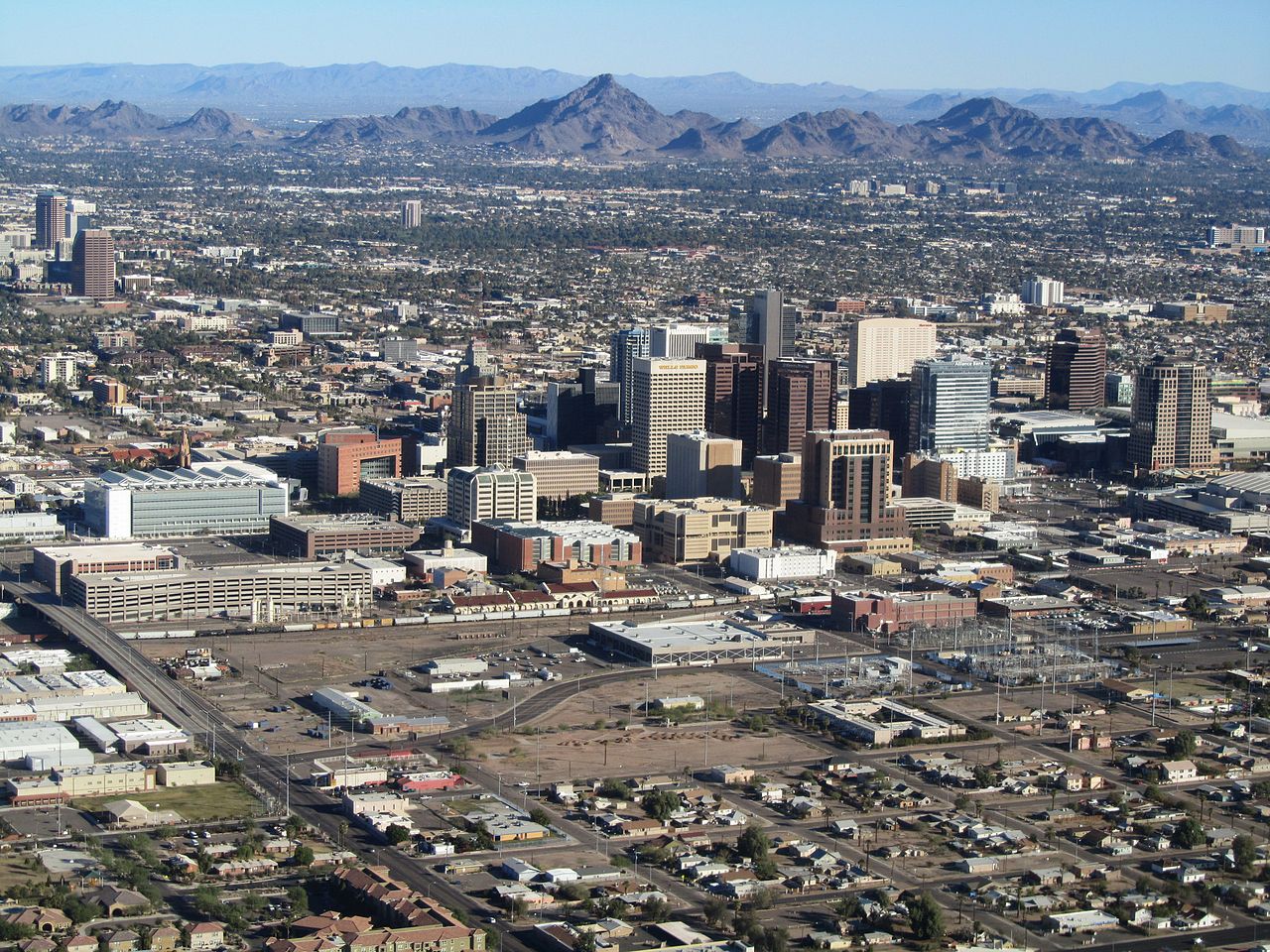
Phoenix is the capital of Arizona and also one of the five largest cities in the United States. This vast metropolis, dominated by a desert climate, is known for its sunny weather for most of the year. The city stands out with its modern skyscrapers as well as its green parks, golf courses, and dynamic urban life. Natural areas like Camelback Mountain offer popular routes for hiking and scenery enthusiasts. In addition, the surrounding desert landscape is an ideal starting point to discover Arizona’s unique beauties.
Phoenix also stands out with its cultural richness. The Heard Museum is notable for its extensive collection of Native American art, while the Phoenix Art Museum attracts art lovers with its international exhibitions. In addition, countless festivals, concerts, and open-air events held every year create a lively cultural atmosphere in the city. Phoenix is a destination that blends historical roots with modern life and offers visitors a multifaceted experience.
20. Prescott (historic square and outdoor activities)
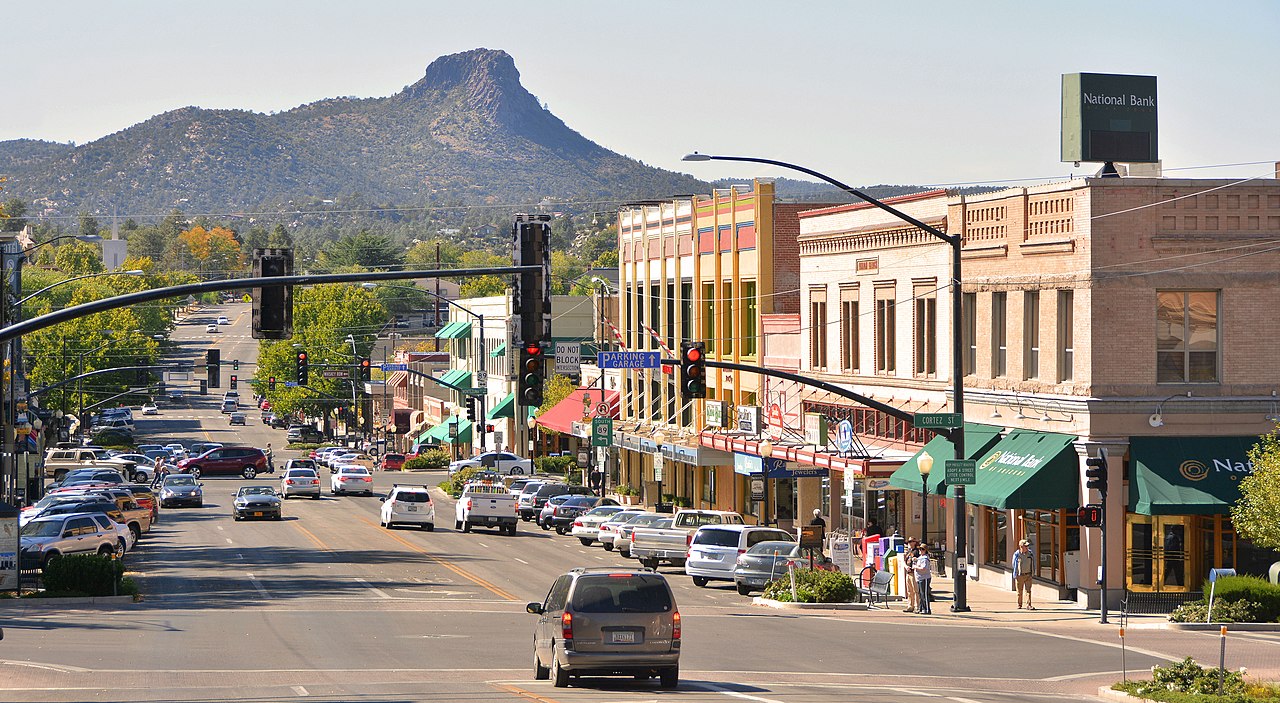
Prescott is a town located in the central-northern region of Arizona, famous for its historical texture and natural beauty, and is a former state capital. Shaped around the historic Courthouse Plaza, this city offers a sense of traveling back in time with its 19th-century buildings, antique libraries, and atmospheric cafes. The farmers’ markets, concerts, and open-air events frequently held at the Plaza attract both locals and visitors, reflecting the town’s friendly and traditional character.
Prescott is very rich in outdoor activities. The hiking trails among the interesting rock formations of the Granite Dells, the routes along Watson Lake for paddlers, and the campsites within Prescott National Forest offer a variety of options for nature lovers. In addition, the surroundings of calm lakes such as Pine Flat Lake are ideal spots for picnicking and fishing. For visitors who want to experience both history and nature together, Prescott is a small but impressive getaway spot.
